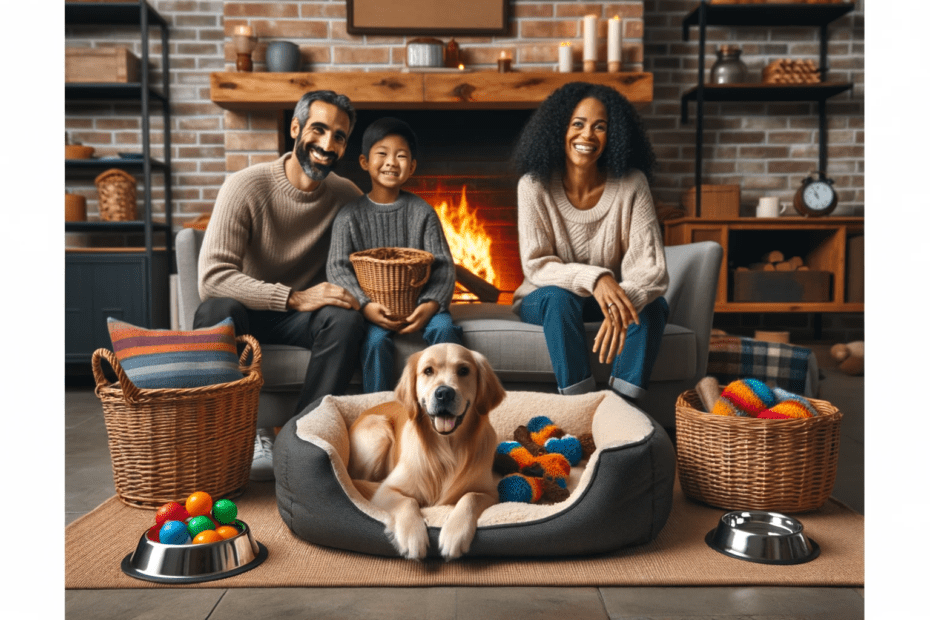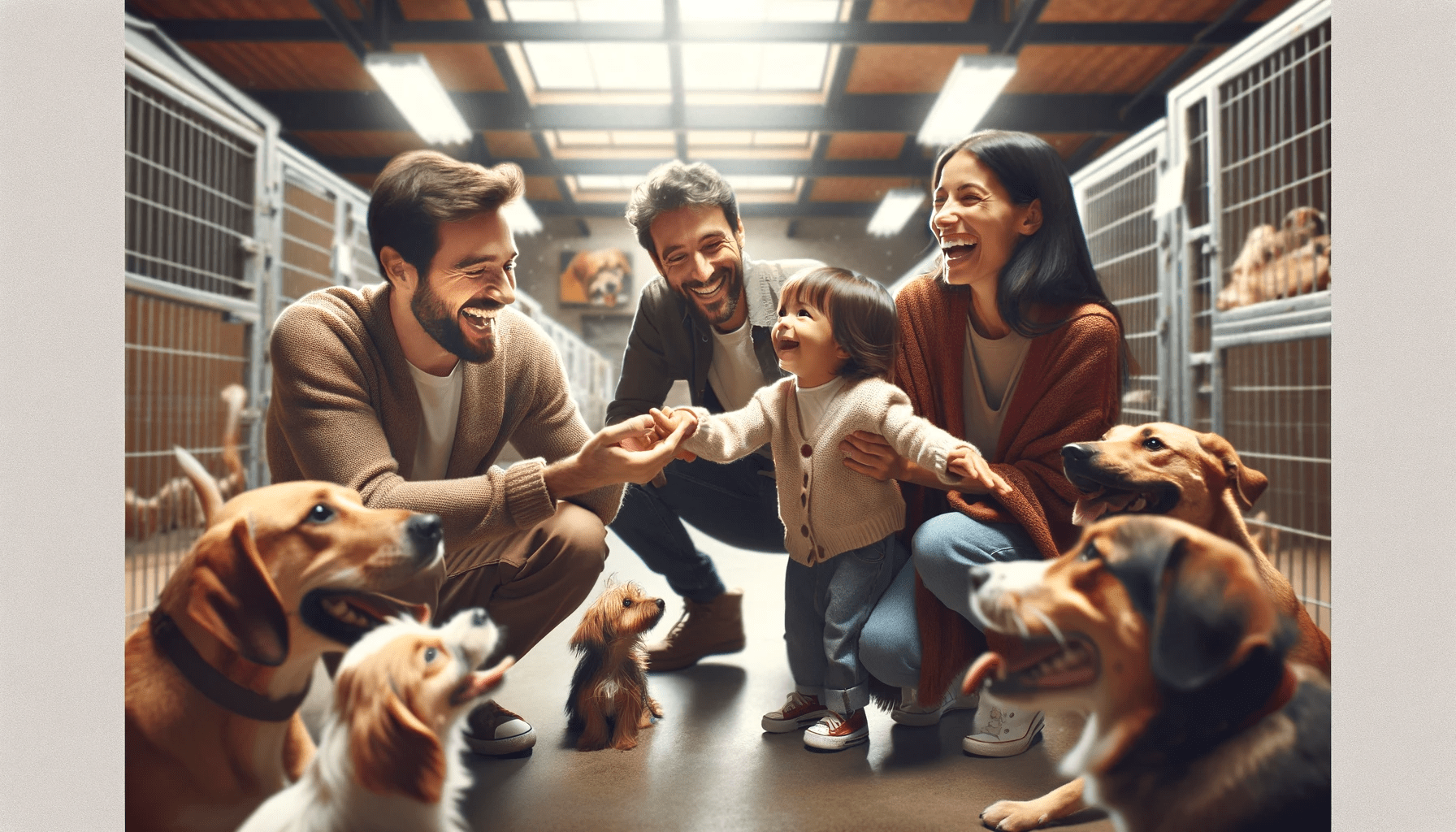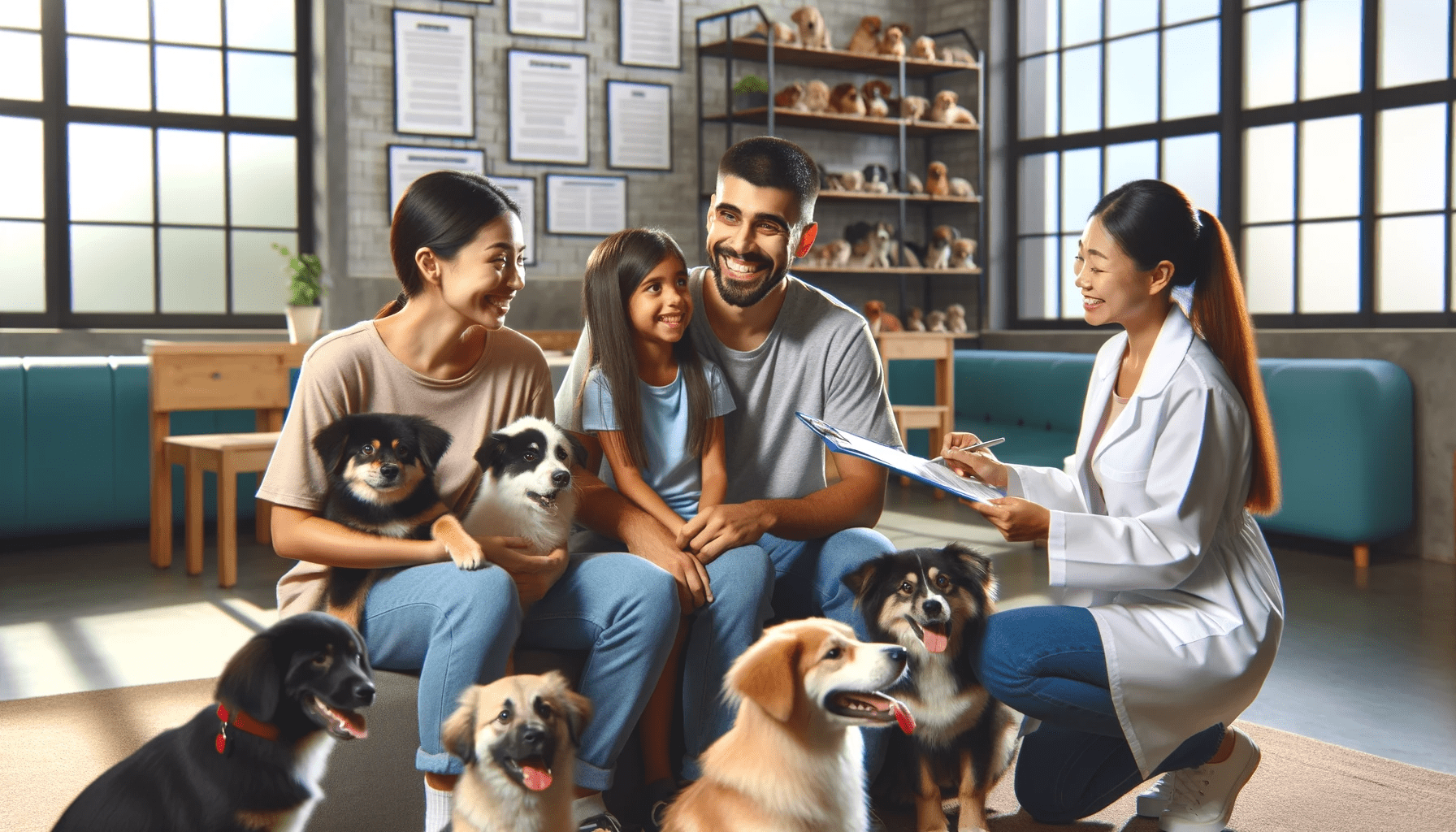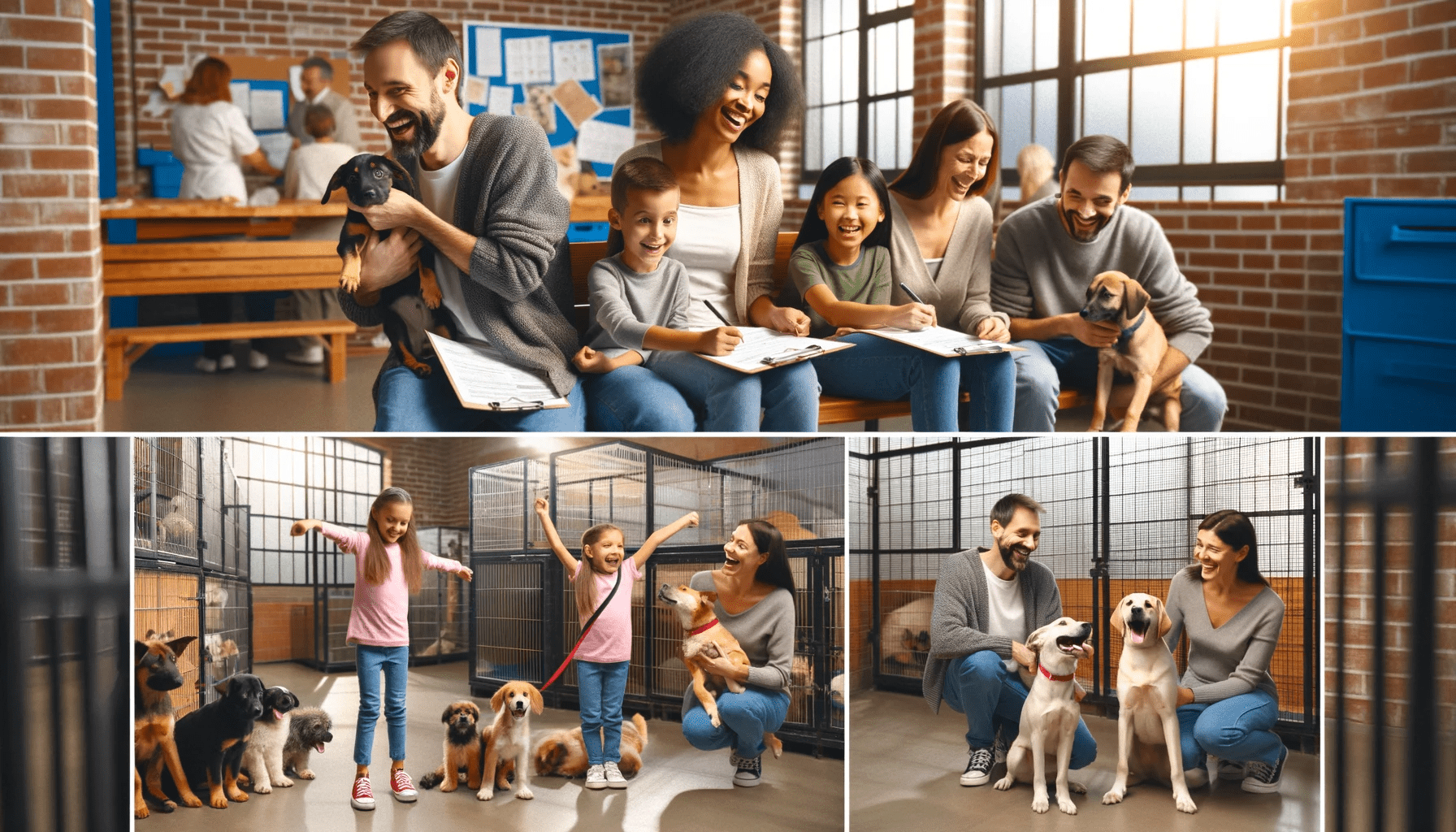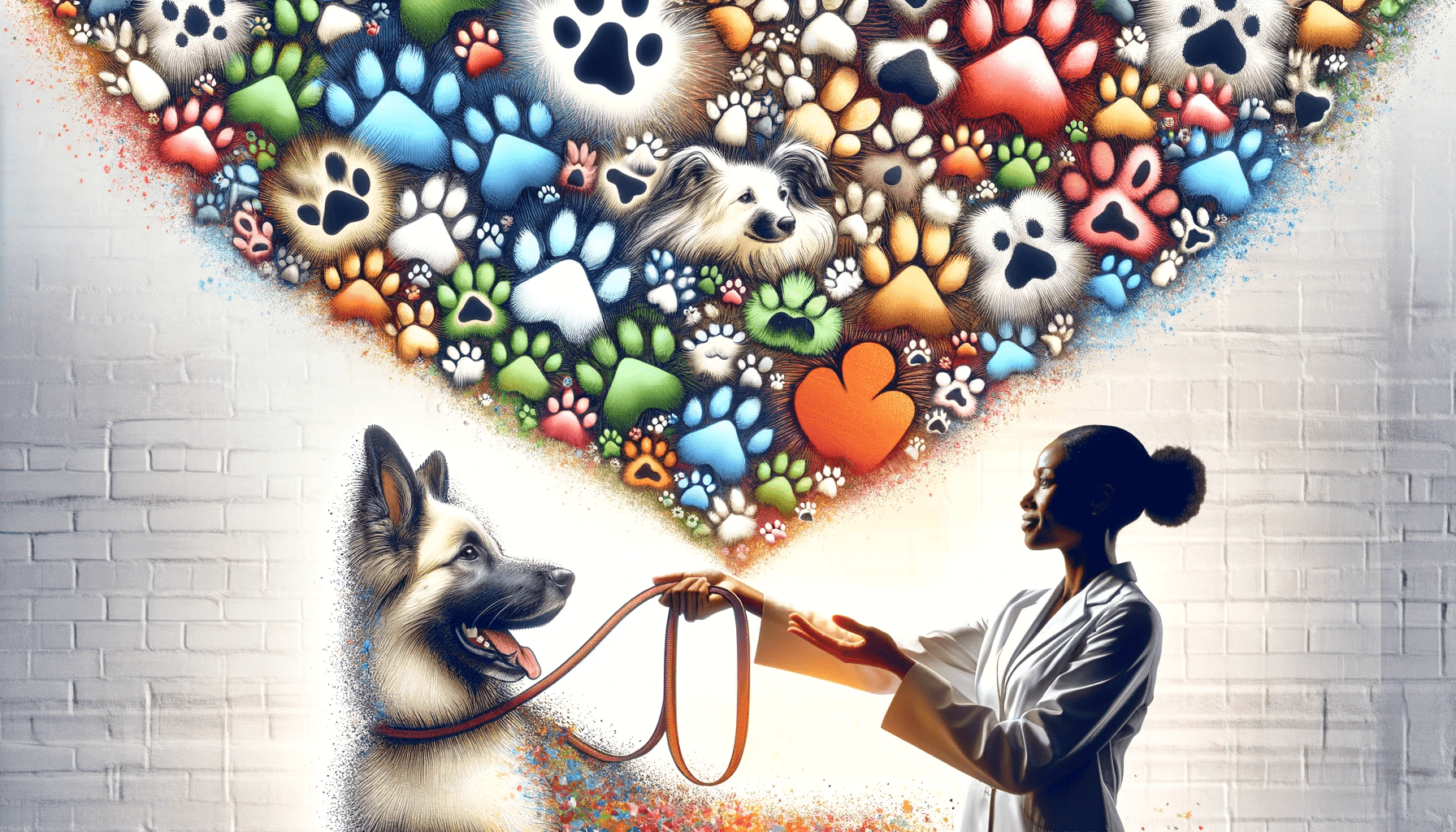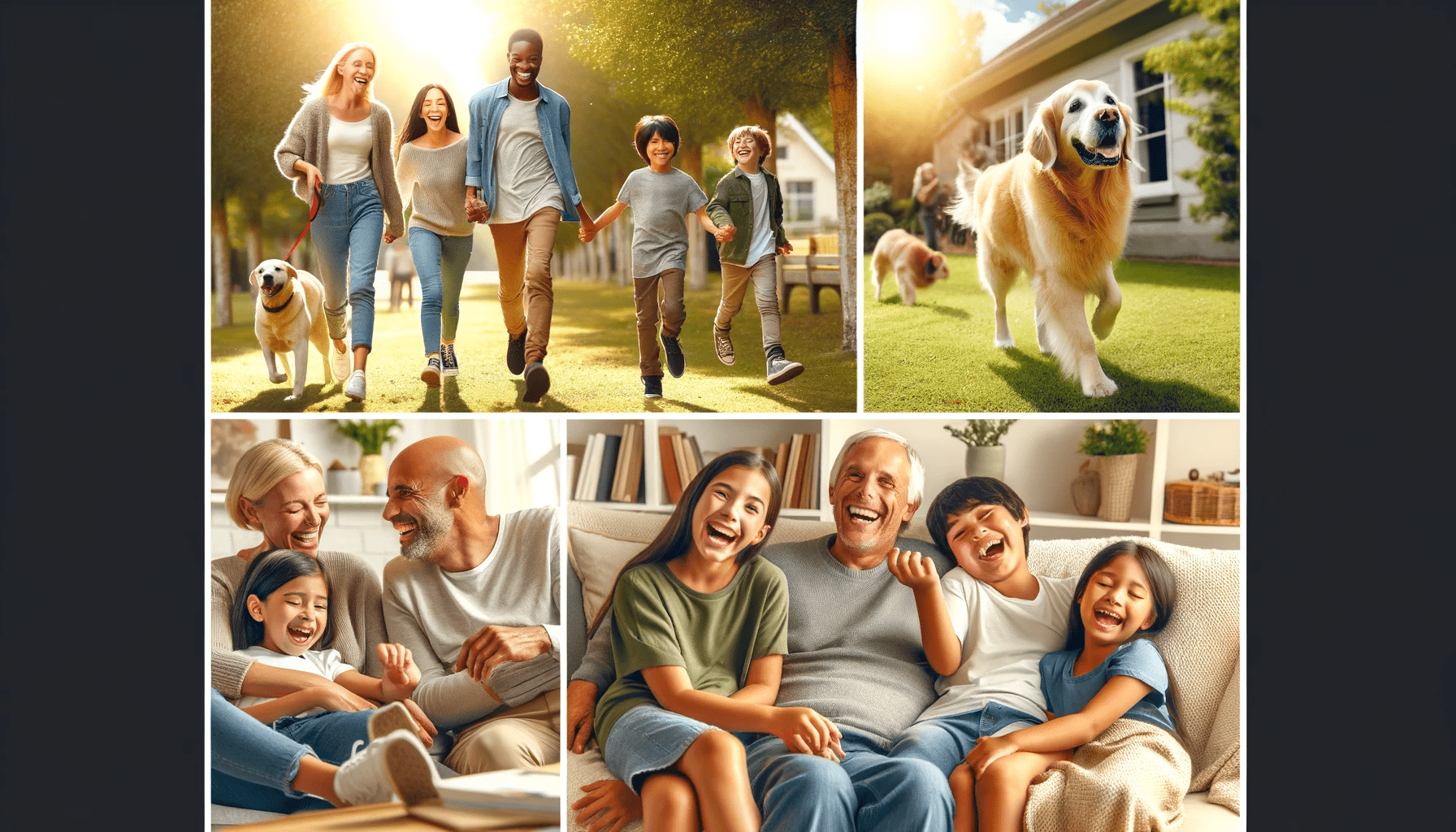Are you ready to welcome a new dog into your home?
Get prepared with these 12 must-know tips.
Choose the right breed and size, puppy-proof your home, and create a safe space for your furry friend.
Stock up on essential supplies and establish a consistent routine.
Teach basic commands and obedience, and provide mental stimulation and enrichment.
Manage separation anxiety and stress, and maintain a healthy lifestyle with exercise and nutrition.
Get ready for a wonderful journey with your new best friend!
Key Takeaways
- Choosing the right breed and size for your home and lifestyle is essential when welcoming a new dog.
- Puppy proofing your home and establishing a safe space for your dog will help prevent accidents and ensure their safety.
- Socializing your dog with people and other animals is important for their development and behavior.
- Establishing a consistent routine, providing mental stimulation, and using positive reinforcement training will help your dog adjust and thrive in their new environment.
Choosing the Right Breed and Size
When choosing a breed and size for your new dog, it's important to consider your lifestyle and living situation. The right breed and size will greatly impact your experience as a dog owner.
If you live in a small apartment, a large breed mightn't be the best choice. They require more space to move around and can feel cramped in tight quarters. On the other hand, if you have a big backyard and an active lifestyle, a larger breed might be a great fit. They'll have plenty of space to run and play.
Another important factor to consider is the importance of early socialization. It's crucial to expose your new dog to different people, animals, and environments from a young age. This helps them develop good social skills and prevents behavioral issues in the future. Different breeds have different socialization needs, so it's important to research and understand the specific requirements of the breed you choose.
Additionally, think about your own preferences and energy levels. Some breeds are known for being more energetic and require more exercise and mental stimulation. Others are more laid-back and require less activity. Be honest with yourself about how much time and energy you can commit to your new dog, and choose a breed and size that matches your lifestyle.
Puppy Proofing Your Home
To ensure the safety of your new puppy, how can you effectively puppy proof your home?
Before bringing your furry friend home, it's essential to make sure your living space is safe and secure. Here's a puppy proofing checklist to help you create a safe environment for your new companion.
Start by securing any loose wires or cords that may tempt your curious pup. Use cord covers or zip ties to keep them out of reach.
Next, remove any toxic plants or household chemicals from your pup's reach. Keep cleaning supplies locked away and place plants in areas that are inaccessible.
Ensure that all small objects, such as coins or buttons, are stored away. Puppies love to explore with their mouths, and swallowing these items can lead to choking or intestinal blockages. Additionally, keep trash cans securely closed to prevent your pup from rummaging through them.
When it comes to creating a safe outdoor space, make sure your yard is fully fenced and that there are no gaps or holes where your puppy can escape. Remove any toxic plants from the yard and secure any potential hazards like gardening tools or sharp objects.
Establishing a Safe Space for Your Dog
Create a designated area where your dog can feel safe and secure. This will help them adjust to their new surroundings and provide them with a sense of comfort.
Here are four essential tips for establishing a safe space for your dog:
- Choose a quiet spot: Find a quiet area in your home where your dog can retreat to when they need some downtime. It should be away from high-traffic areas and potential sources of noise, such as the front door or television.
- Provide a cozy bed or crate: Dogs love having a comfortable space to call their own. Invest in a cozy bed or crate where your dog can relax and feel secure. Make sure it's the right size for your dog and add some soft blankets or toys to make it even more inviting.
- Set clear boundaries: Establishing boundaries is crucial for creating a safe environment for your dog. Use baby gates or pet barriers to restrict access to certain areas of your home, especially if there are potential hazards or fragile items around.
- Consistency is key: Dogs thrive on routine and consistency. Stick to a schedule for feeding, exercise, and playtime. This will help your dog feel more secure and confident in their surroundings.
Stocking Up on Essential Supplies
Now that you have established a safe space for your new dog, it's time to stock up on essential supplies to ensure their comfort and well-being.
One of the most important things you'll need is the right type of leash and collar. When choosing a leash, consider the size and strength of your dog. For larger breeds, a sturdy nylon leash with a comfortable handle is recommended. Smaller dogs may do well with a retractable leash that allows for more freedom of movement.
As for collars, opt for an adjustable one made of durable material. It should fit snugly but not too tight around your dog's neck.
In addition to leashes and collars, finding the best grooming supplies is crucial. Regular grooming maintains your dog's hygiene and keeps their coat healthy. A good brush suited to your dog's fur type is essential. If your dog has long hair, consider getting a comb to prevent tangles. For bathing, choose a gentle dog shampoo that won't irritate their skin. Don't forget to buy a nail clipper to keep their nails trimmed.
Creating a Consistent Routine
Establishing a consistent routine is essential for ensuring your new dog's comfort and well-being as you continue to stock up on essential supplies. Dogs thrive on structure and predictability, so it's important to establish a consistent schedule right from the start. Here are some tips to help you create a routine that works for both you and your furry friend:
- Set a regular feeding schedule: Dogs are creatures of habit, so feeding them at the same times every day can help regulate their digestion and prevent accidents in the house. Stick to a consistent schedule and avoid free-feeding to maintain a healthy appetite.
- Implement regular exercise: Dogs have a lot of energy that needs to be burned off daily. Make sure to incorporate regular exercise into your routine, such as daily walks, playtime in the backyard, or even trips to the dog park. This won't only keep your dog physically fit but also mentally stimulated.
- Establish a bedtime routine: Just like humans, dogs benefit from a consistent bedtime routine. Set a regular time for your dog to go to bed and follow a calming routine before bedtime, such as a walk, some quiet playtime, and a final potty break.
- Stick to a consistent training schedule: Training is an important part of a dog's routine. Set aside dedicated time each day for training sessions to help your new dog learn and reinforce good behavior. Consistency is key when it comes to training, so stick to a regular schedule and be patient with your furry friend.
Introducing Your Dog to Family and Friends
To ensure a smooth transition for your new dog, introducing them to your family and friends is an important step in their adjustment process. When introducing your dog to children, it's crucial to prioritize safety and supervision. Teach children how to approach and interact with the dog gently, ensuring that they understand the importance of giving the dog space when needed. Encourage them to avoid pulling on the dog's tail or ears, as this can cause discomfort or fear.
Managing your dog's excitement around visitors is essential for creating a positive and calm environment. Before guests arrive, take your dog for a walk or engage in a play session to help release any excess energy. When visitors arrive, keep your dog on a leash initially to maintain control and prevent any jumping or excessive excitement. Allow your dog to approach the visitors calmly, rewarding them with treats and praise for good behavior.
If your dog becomes overwhelmed or anxious around visitors, create a designated safe space where they can retreat to. This can be a crate or a separate room with their bed and toys. Gradually increase exposure to visitors, providing positive reinforcement and rewards for calm behavior. It's important to remember that every dog is different, and some may need more time and patience to adjust to new people.
Socializing Your Dog With Other Animals
When it comes to socializing your new dog with other animals, there are a few key points to keep in mind. First, it's important to introduce your dog to different animal species gradually and in a controlled environment. This will help them become familiar with different scents, behaviors, and body language.
Second, it's crucial to handle potential conflicts between your dog and other animals with care and patience, using positive reinforcement training techniques to encourage good behavior.
Introducing Different Animal Species
You can successfully socialize your new dog with other animals by gradually introducing them to different species and providing positive reinforcement.
This process requires patience and careful management to ensure a smooth transition. Here are some tips to help you introduce your dog to different animal species:
- Start with controlled introductions: Begin by introducing your dog to animals in a controlled environment, such as on-leash or behind a gate. This allows them to observe and interact safely without feeling overwhelmed.
- Use positive reinforcement: Reward your dog for calm and friendly behavior around other animals. This can be done through treats, praise, or playtime. Positive reinforcement helps them associate good behavior with positive experiences.
- Provide supervised interactions: Gradually increase the level of interaction between your dog and other animals, always under close supervision. This allows you to intervene if any territorial behavior arises.
- Seek professional help if needed: If your dog exhibits persistent territorial behavior or aggression towards other animals, consult a professional dog trainer or behaviorist. They can provide guidance and support to address any issues and ensure a harmonious coexistence between your dog and other animals.
Handling Potential Conflicts
Successfully socializing your new dog with other animals involves handling potential conflicts and ensuring a harmonious coexistence. Conflict resolution is crucial when it comes to dealing with aggression between your dog and other animals.
First and foremost, it's essential to understand your dog's behavior and body language to identify any signs of aggression. If a conflict arises, it's important to intervene immediately to prevent any harm. One effective technique is to redirect your dog's attention using toys or treats, distracting them from the potential conflict.
Additionally, gradually introducing your dog to other animals in controlled environments can help them become more comfortable and reduce the chances of aggression. Always remember to reward positive behavior and provide a safe and calm environment for successful socialization.
Positive Reinforcement Training
To ensure a smooth transition for your new dog, it's important to employ positive reinforcement training when socializing them with other animals. This type of training focuses on rewarding good behavior rather than punishing bad behavior, which helps create a positive association with other animals.
Here are four key tips for successfully socializing your dog with other animals:
- Start with controlled introductions: Begin by introducing your dog to one calm and friendly animal at a time. Use a leash and reward your dog with treats or praise for calm behavior.
- Use clicker training: Clicker training is a great tool for reinforcing positive behavior. Click and treat your dog when they display appropriate behavior around other animals.
- Gradually increase exposure: Slowly increase the duration and difficulty of interactions as your dog becomes more comfortable. Always reward good behavior during these encounters.
- Seek professional help if needed: If your dog is struggling with socialization, consider seeking help from a professional dog trainer who specializes in reward-based training. They can provide guidance and support to ensure a successful transition for your dog.
Housetraining and Potty Training Tips
When it comes to housetraining and potty training your new dog, there are a few key points to keep in mind.
First, crate training can be a helpful tool in teaching your dog where to go to the bathroom.
Establishing a routine for feeding and bathroom breaks will also greatly assist in the training process.
And if accidents do happen, it's important to handle them calmly and without punishment, as this can hinder your dog's progress.
Crate Training Basics
Start by introducing your new dog to their crate using positive reinforcement and consistent training. Crate training is an essential part of housetraining and potty training your new dog.
Here are some tips to help you with crate training:
- Create a positive association: Make the crate a comfortable and inviting space by placing bedding, toys, and treats inside. Encourage your dog to voluntarily enter the crate by using positive reinforcement techniques such as praise and rewards.
- Gradually increase crate time: Start with short periods of time in the crate and gradually increase the duration as your dog becomes more comfortable. This will help prevent anxiety and crate aversion.
- Use a consistent schedule: Establish a routine for crate training, including regular feeding times and potty breaks. Consistency will help your dog understand when it's time to go outside and when it's time to rest in their crate.
- Address crate training challenges: If your dog shows signs of distress or resistance during crate training, consult a professional trainer or behaviorist for guidance. They can help you address any challenges and develop a personalized training plan.
Establishing a Routine
How can you establish a routine for housetraining and potty training your new dog?
Establishing a routine is crucial in helping your dog understand when and where to go potty.
Start by establishing a feeding schedule. Feeding your dog at the same time every day will help regulate their bowel movements, making it easier to predict when they need to go outside.
After meals, take your dog outside immediately.
Additionally, incorporate exercise into the routine. Regular exercise helps stimulate your dog's digestive system and promotes regular bowel movements. Take your dog for walks or engage in playtime to ensure they get enough physical activity.
Consistency is key, so be patient and stick to the routine. With time, your new dog will learn where and when to go potty.
Handling Accidents Calmly
To effectively handle accidents during housetraining and potty training, it's important to remain calm and address the situation promptly.
Accidents happen, especially with a new dog in the home. Here are some tips to help you handle accidents calmly and prevent future accidents:
- Stay calm: Remember that accidents are a part of the learning process. Yelling or punishing your dog will only confuse them and hinder their progress.
- Clean up properly: Use an enzymatic cleaner to completely remove any scent from the accident spot. This will help prevent your dog from being attracted to that area again.
- Stick to a schedule: Establish a consistent routine for potty breaks. Take your dog outside frequently, especially after eating, drinking, or waking up from a nap.
- Reward good behavior: When your dog goes potty outside, praise and reward them with treats or verbal praise. This positive reinforcement will help them understand where they should be eliminating.
Teaching Basic Commands and Obedience
Begin by establishing clear boundaries and expectations for your new dog's behavior. Teaching basic commands and obedience is essential for a well-behaved and happy dog. Start by teaching leash manners, as this will ensure that walks are enjoyable and safe for both you and your furry friend. Begin by using a sturdy, comfortable leash and collar or harness. Practice loose leash walking, where your dog walks beside you without pulling or dragging you along. Use positive reinforcement techniques such as treats or praise to reward your dog for walking nicely on the leash.
Another important command to teach is off leash recall. This command is crucial for keeping your dog safe and under control when they aren't on a leash. Start in a secure, enclosed area and call your dog's name followed by the command 'come.' Use a happy and enthusiastic tone of voice to encourage your dog to come to you. When they do, reward them with treats and praise. Gradually increase the difficulty by practicing in different environments and with distractions.
Consistency and patience are key when teaching basic commands and obedience. Remember to always use positive reinforcement and avoid punishment or harsh techniques. With time and practice, your new dog will learn to follow your commands and become a well-behaved member of your family.
Providing Mental Stimulation and Enrichment
Engage your new dog's mind and prevent boredom by providing mental stimulation and enrichment activities. Dogs are intelligent creatures that thrive on mental challenges. Here are four ways to keep your furry friend mentally stimulated and entertained:
- Puzzle toys: Invest in interactive toys that require your dog to solve a problem to receive a treat. These toys engage their problem-solving skills and keep them entertained for hours.
- Hide and seek: Hide treats or toys around the house and encourage your dog to find them. This activity not only stimulates their mind but also taps into their natural instinct to search and hunt.
- Training sessions: Regular training sessions not only teach your dog new skills but also provide mental stimulation. Use positive reinforcement techniques to make the sessions enjoyable and rewarding for both of you.
- Scent games: Dogs have an incredible sense of smell, so why not put it to good use? Hide treats or toys around the yard or in the house and let your dog sniff them out. This activity is mentally stimulating and allows them to use their natural abilities.
Managing Separation Anxiety and Stress
When managing separation anxiety and stress in your new dog, consider implementing gradual desensitization techniques. Separation anxiety in dogs can manifest in behaviors such as excessive barking, destructive chewing, or even house soiling. To help your dog cope with being alone, start by leaving for short periods of time and gradually increase the duration. This will help your dog become more accustomed to being alone and reduce their anxiety levels.
Another effective technique is to create a positive association with your departure. Give your dog a special treat or toy that they only receive when you leave. This will help them associate your departure with something positive, alleviating their stress.
Providing mental and physical exercise before leaving can also help manage separation anxiety. Taking your dog for a long walk or engaging in a stimulating play session will tire them out and reduce their anxiety levels. Additionally, leaving interactive toys or puzzle feeders can keep your dog occupied and mentally stimulated while you're away.
Consider using stress relief techniques such as aromatherapy or calming music to create a soothing environment for your dog. Some dogs respond well to the scent of lavender or chamomile, while others find classical music or nature sounds calming. Experiment with different techniques to find what works best for your dog.
Maintaining a Healthy Lifestyle With Exercise and Nutrition
To ensure your new dog maintains a healthy lifestyle, it's important to prioritize exercise and nutrition. Regular exercise routines are essential for your dog's physical and mental well-being.
Here are some tips to help you establish a healthy exercise routine for your furry friend:
- Daily walks: Take your dog for a walk every day. This not only provides physical exercise but also stimulates their senses and allows them to explore their surroundings.
- Playtime: Engage in interactive play sessions with your dog. This can include games of fetch, tug-of-war, or hide-and-seek. These activities help keep your dog active and mentally stimulated.
- Doggy sports: Consider participating in dog sports such as agility or obedience training. These activities provide structured exercise and help strengthen the bond between you and your dog.
- Mental stimulation: Incorporate puzzle toys or treat-dispensing toys into your dog's routine. These toys require mental effort, keeping your dog engaged and entertained.
In addition to exercise, it's crucial to meet your dog's nutritional requirements. Consult with your veterinarian to determine the appropriate diet for your dog's age, breed, and activity level. Provide a balanced diet that includes high-quality protein, carbohydrates, and healthy fats. Remember to monitor your dog's weight and adjust their food intake accordingly.
Frequently Asked Questions
How Do I Find a Reputable Breeder or Rescue Organization to Adopt a Dog From?
To find a reputable breeder or rescue organization to adopt from, start by researching local options. Ask for recommendations from friends, check online reviews, and visit the facilities in person. Trust your instincts and choose a place that feels right for you and your new furry friend.
What Should I Do if My New Dog Shows Signs of Aggression Towards Other Animals?
If your new dog shows signs of aggression towards other animals, it's important to address the issue promptly. Consult with a professional dog trainer who specializes in dealing with dog aggression. They can recommend effective training methods to help modify your dog's behavior.
How Can I Help My Dog Adjust to Being Left Alone for Extended Periods of Time?
To help your dog adjust to being alone for long periods, focus on separation anxiety management. Gradually increase alone time, provide engaging toys, and consider crate training as a safe space for them.
Are There Any Specific Training Techniques or Methods That Are Recommended for Certain Breeds?
When it comes to specific breed training, there are indeed recommended training techniques. Different dog breeds have different temperaments and learning styles, so it's important to tailor your training approach accordingly.
What Should I Do if My New Dog Has a Medical Emergency or Becomes Sick?
If your new dog has a medical emergency or becomes sick, finding the right veterinarian is crucial. Understanding common dog illnesses will help you recognize symptoms and seek immediate medical attention.
Conclusion
Now that you have these 12 must-know tips for welcoming a new dog home, you can feel confident in providing them with a safe and happy environment.
By choosing the right breed, puppy proofing your home, establishing a safe space, and stocking up on essential supplies, you're setting your dog up for success.
Remember to create a consistent routine, teach basic commands, provide mental stimulation, manage separation anxiety, and maintain a healthy lifestyle.
With these tips, you and your new furry friend will have a wonderful life together.
